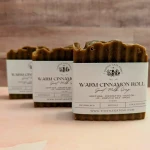Transforming vineyard operations through the adoption of technology in winemaking
Added one year ago
By Hawke's Bay Future Farming Trust

Central Otago's Domaine Thomson vineyard has a unique approach to grape protection is unfolding as the harvest season approaches. Viticulturist Simon Gourley is swapping traditional nets for cutting-edge technology, using green laser beams strategically flashed across 8 hectares of vines. This innovative method eliminates the need for costly netting procedures, allowing the team at the small organic vineyard to focus on maximising both the quantity and quality of their annual grape harvest.
Simon is not just relying on lasers for innovation; he's also utilising the Sectormentor app to log and analyse crucial data throughout the growing season. This digital tool provides real-time insights, including comparisons of winter pruning weights, flower counts, missing vines, and soil health indicators. While not groundbreaking, Simon emphasises the significance of historical data in informing crucial growing and harvest decisions, enhancing the overall winemaking process.
Looking ahead to the 2025 vintage, Simon envisions the integration of a small electric autonomous platform programmed to navigate the vineyard. This autonomous platform could potentially carry out tasks like deploying the laser or a gas gun, tackling jobs that, while not glamorous, can become increasingly costly for labour-intensive operations like Domaine Thomson. The goal is to streamline operations, allowing the team to focus on enhancing fruit quality and optimising the positioning of shoots and bunches for better wine production.
Domaine Thomson is not alone in embracing technology within the wine industry. Larger players like Treasury Wine Estates Ltd and Pernod Ricard Winemakers are investing in robotics, utilising autonomous vineyard tractors that perform various tasks such as weeding, trimming, and spraying, all while collecting valuable data. The shift towards automation is not just a cost-saving measure; it also frees up skilled labour to focus on more technical aspects of viticulture.
Tracy Atkin, a startup advisor and investor, emphasises the broader technological landscape encompassing drones, satellites, camera technology, and innovations in workforce planning and health and safety. The evolving technology extends beyond the vineyards into wineries, where advancements in nanotechnology facilitate molecular filtration, enzyme sensors, wine analytics, and fermentation monitoring.
Dr. David Jordan, a viticultural consultant, notes the transformative impact of technology on farming practices. Modern GPS-fitted tractors have liberated farmers from steering wheels, allowing for more efficient and targeted activities. For winegrowers and winemakers, embracing technology is not just a choice; it's a necessity for staying competitive and improving the overall winemaking process. Those who resist this evolution risk falling behind in an industry that is rapidly adopting new and accessible technologies.
In conclusion, the marriage of technology and winemaking is ushering in a new era of efficiency and innovation. As the wine industry continues to evolve, the integration of cutting-edge tools and automation promises to redefine traditional practices and elevate the quality of wines produced across the globe.
Join the conversation
Be the first to leave a comment.
Leave a comment
All comments are reviewed before they are published on the website. Your email address will not be published.




Family-Owned Farm Embraces Regenerative Agriculture to Grow and Educate


